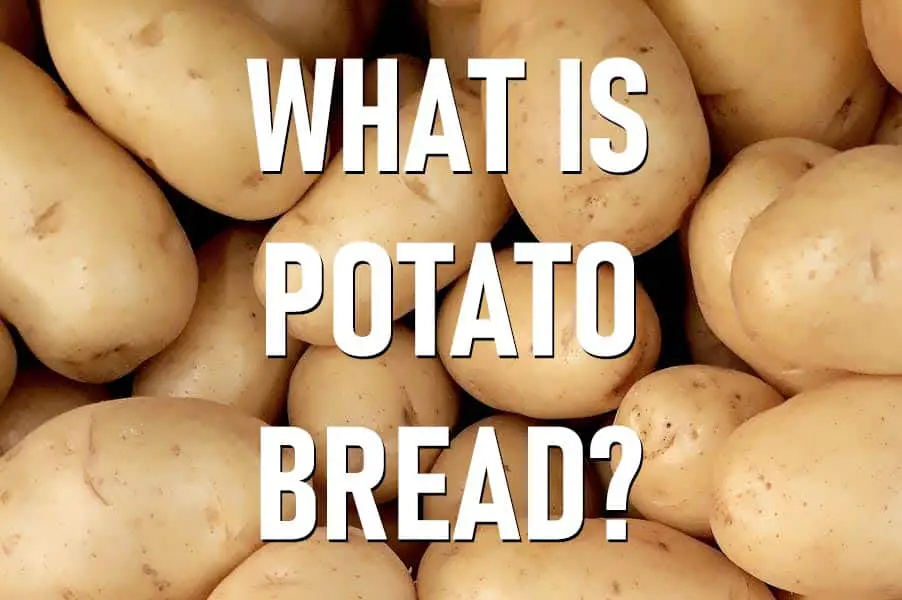We regularly hear that people are a little confused by potato bread. Many often wonder if it is a gluten-free alternative for wheat bread. If that is what you were hoping for, sorry to bring bad news, but it isn’t a gluten-free alternative for bread.
Potato bread is a wheat bread that has been enriched with potato flakes or mashed potatoes. To make a basic loaf of bread into potato bread a portion of wheat flour is replaced by a portion of potato flakes. The end result is a bread that is more moist and chewy.
This is especially true for basic white loaves of bread, as they tend to lack good chew and moisture without the aid of extra ingredients. Potatoes have long been used to fill out and improve bread. In fact, if your grandma used to make you homemade rolls there is a good chance that you’ve had a roll or two in your day that incorporated potato flakes. But more often than not, potato bread, at least as it sits in grocery stores these days is a white sandwich loaf. So let’s discuss what those are and how they are similar and different from a basic white loaf of bread.
Potato Bread is Wheat Bread
Wheat bread, especially those from a basic yeast recipe can lack flavor and texture. Which is fine, we’re not snobs over here. We love us some basic yeast bread! But, we also like to dress them up a bit whenever we can. Having a few simple ingredients like oil, dairy, or potato flakes can really help step both flavor and texture up.
This is especially true if you want to avoid dry bread, or bread that dries out quickly.
Potato flakes are a very simple ingredient to have on hand to work with, as they can be found in nearly any grocery store. If you’re not sure what it is, think instant mashed potato mix. Still not sure, you can see it here (link takes you to Amazon). Or you can simply bake or boil potatoes and use those in your dough as well. Just be sure to note if your recipe calls for the potato to be warm or cooled when using.
But, potatoes are not superior to other ingredients commonly used to enrich bread. At least not when it comes to texture and flavor. We find they are very similar to using dairy and oil. And, to be honest, many potato bread recipes call for including oil and dairy as well.
What you really end up with, is a basic wheat bread that is nearly the same as other wheat bread with four significant differences: fiber, protein, phosphorus, and sugar content. Potato bread provides more fiber and protein per serving while keeping the rest of the nutrients and calories typically found in wheat bread relatively the same. Aside from sugar and phosphorus which is significantly lower in most white bread.
Potato Bread Nutrition
An average slice of potato bread will provide close to 80 calories, 4 grams protein, and 2 grams fiber. White bread on the other hand, keeps the same calorie count (roughly) but provides half the protein and fiber content. One might be prone to think this makes potato bread a healthier option. But that isn’t necessarily the case. This has to do with the sugar content found in potato bread. Sugar content is close to 3 times higher in potato bread vs plain white bread at close to 4 grams per slice.
If that doesn’t sound like much, consider that the average cookie has around the same amount of sugar. I’m not here to judge, you do you boo. I mean, I run a bread blog. I kind of eat bread and write about it for a living. I’m not in a position to judge. 🙂 But, it’s something to consider if you are interested in the healthfulness of potato bread.
The biggest difference though is found in phosphorus content. This is where potato bread is a clear winner as it has a lot more of it. That’s good news as phosphorus is great for teeth and bone health and also partners with protein to play a role in cell repair. Plain white barely moves the scales at 25 mg, while potato bread plops down nearly 120 mg of phosphorus per serving. Take that white bread!
But, in reality, these two types of bread are so very similar that the comparison of the two ultimately boils down to splitting hairs. I really think it’s a personal preference.
For me, I prefer potato flakes in a bread roll or milk bread where I want to “tear” the bread and soak up some sauce or soup. For a sandwich loaf, it’s not my favorite texture.
Related Question
Can Potato Bread Be Gluten Free?
Yes, potato bread can be gluten-free, but that is typically referring to bread made from potato flour or a gluten-free flour blend (no wheat grain used). It is a gluten-free twist on classic potato bread. In that sense, it is just like many other gluten-free recipes that replace other wheat bread varieties.
Here are two popular recipes for gluten-free potato bread, one using flakes and the other using baked potatoes:
RECIPE 1: USING POTATO FLAKES
This one comes from Christine over at Gluten-Free-Bread.org. This loaf barely takes a few minutes over 2 hours to complete. Impressive!
RECIPE 2: USING BAKED POTATOES
This is a Serious Eats recipe that is top ranked, but comes with a significant drawback compared to the first recipe. It takes upwards of 8 hours to complete.

